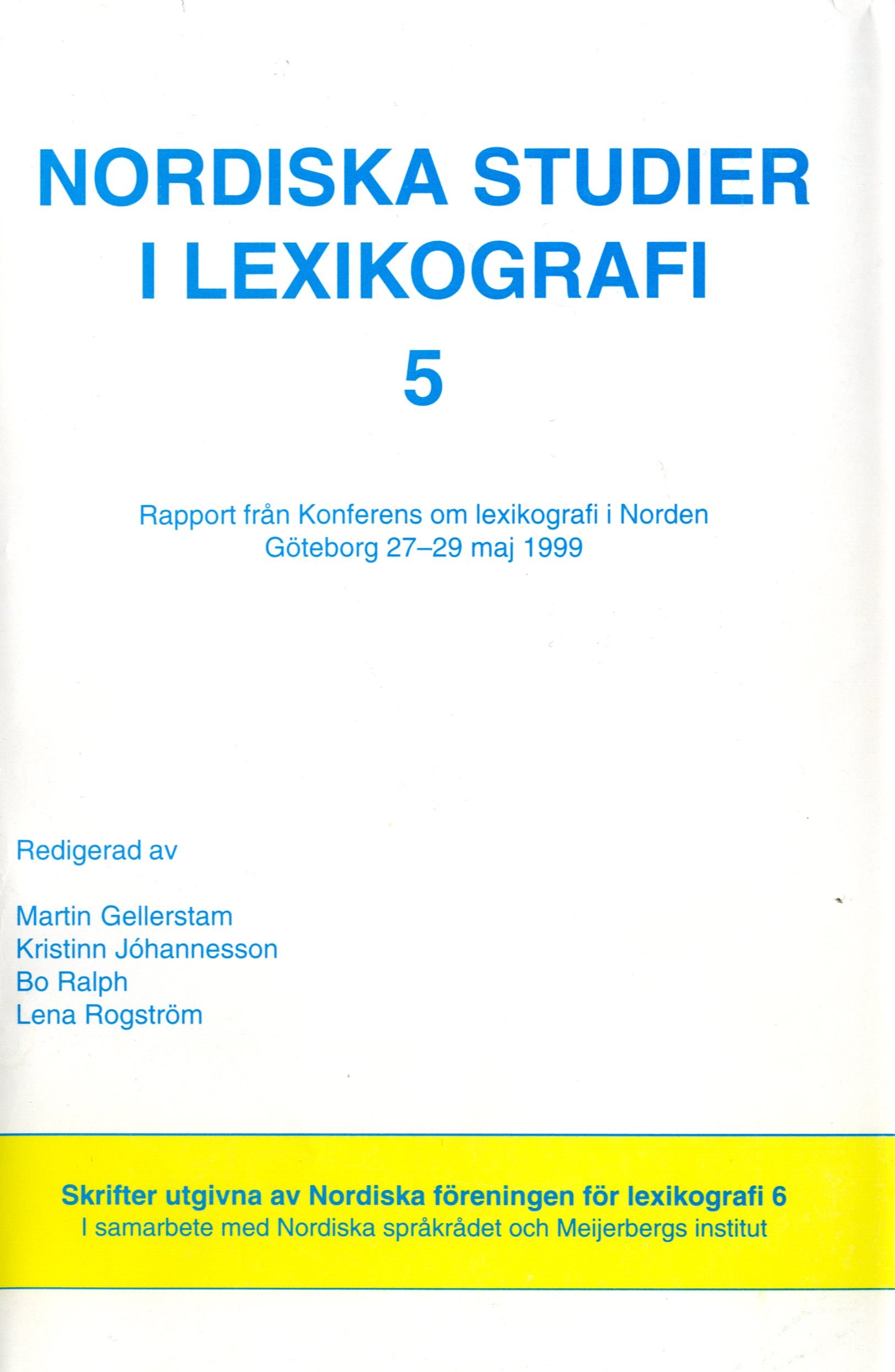Gamla ord blir som nya - OSA-databasen som källa och resurs
Resumé
The Swedish historical dictionary, Ordbok över svenska språket utgiven av Svenska akademien, is now available on the Internet as the OSA database. The dictionary as such is a very valuable source for lexicological research, and the OSA database makes it possible to extract separate structural categories in the dictionary in a much easier and faster way than you can. accomplish by looking up the actual category in the 32 written volumes. One way of using the database is to "recycle" the examples from the authentical texts used in the dictionary, in order to create synchronical corpuses from different periods. These corpuses can then be used as primary material for further examinations. For this paper we extracted a textcorpus of all the l 8th century examples from the database - approximately 850 000 words. We then made comparisons with two older studies of 18th century texts, the first one concerning morphology and the other spelling principles, in order to confirm, and hopefully improve, the earlier results. Thus, our main purpose of this paper is to show the advantages of creating your own corpus out of already existing data, a new opportunity that the OSA database provides for scholars in historical Iinguistics.Downloads
Publiceret
2001-01-01
Citation/Eksport
Cederholm, Y., & Rogström, L. (2001). Gamla ord blir som nya - OSA-databasen som källa och resurs. Nordiske Studier I Leksikografi, (5). Hentet fra https://tidsskrift.dk/nsil/article/view/19454
Nummer
Sektion
Artikler
Licens
Nordisk Forening for Leksikografi/NSL og forfatterne.





